Abstract
Based on 1984 data from the Longitudinal Study on Aging, one-third of White persons aged 80 or older living in the community (N = 1,791) were defined as having no difficulty in walking 1/4 of a mile, in lifting 10 pounds, in climbing 10 steps without resting, or in stooping, crouching or kneeling. Physical ability was associated with lower risk of death over two years mean follow-up; Relative odds (RO) = .4 (95 percent confidence interval = .4, .6) and in survivors, lower utilization of hospitals RO = .4 (CI = .3, .7), physicians RO = .6 (CI = .5, .8) and nursing homes RO = .3 (CI = .2, .5) compared with those having difficulty on any of the four functional measures included in the definition of physical ability. Fifty percent of the women and 42 percent of the men physically able at the time of the baseline survey in 1984 remained physically able at follow-up. Continued physical ability in this group was associated with never having had cardiovascular disease RO = 2.1, (CI = 1.2, 3.7), never having had arthritic complaints RO = 1.9 (CI = 1.2, 2.7), a body mass index less than the 75th percentile RO = 1.8 (CI = 1.2, 2.9), younger age (for each decade of age, RO = 2.0 (CI = 1.1, 3.6), and higher level of education (greater than 13 years versus 0-6 years) RO = 2.4 (CI = 1.2, 4.7). These correlates include factors amenable to preventive measures and highlight the need to consider the heterogeneity of the oldest-old in formulating programs aimed at prevention and postponement of disability.
Full text
PDF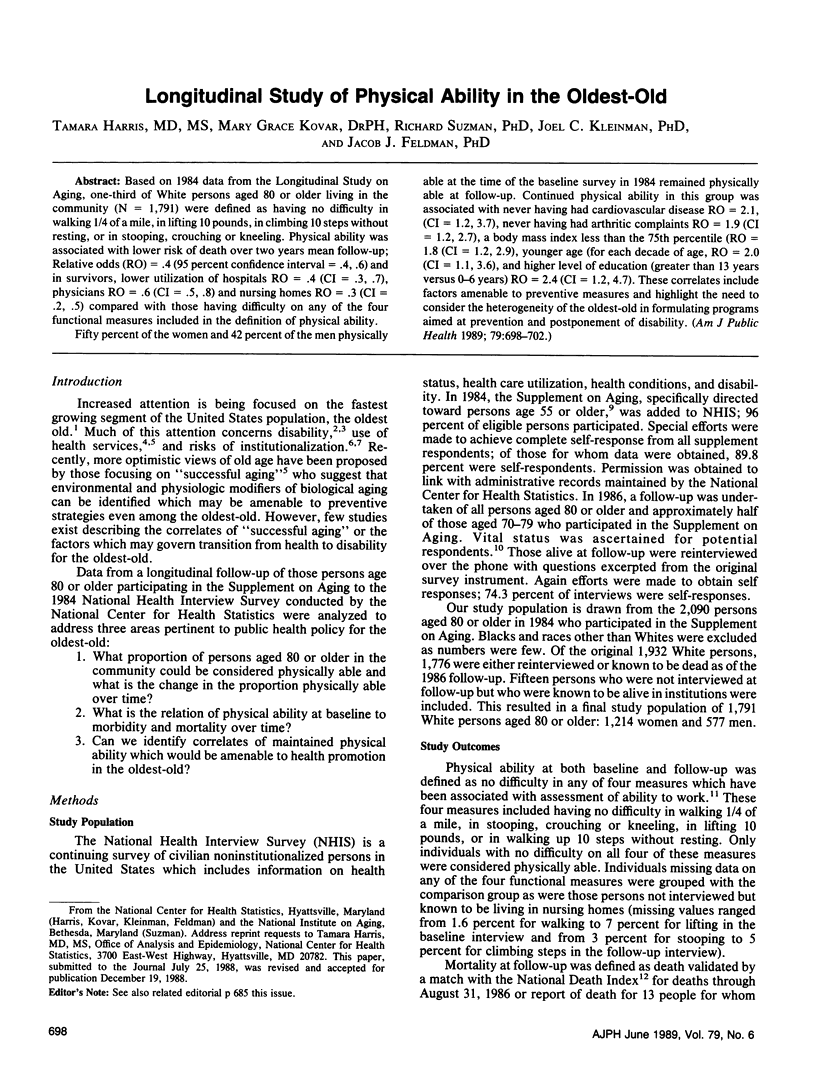
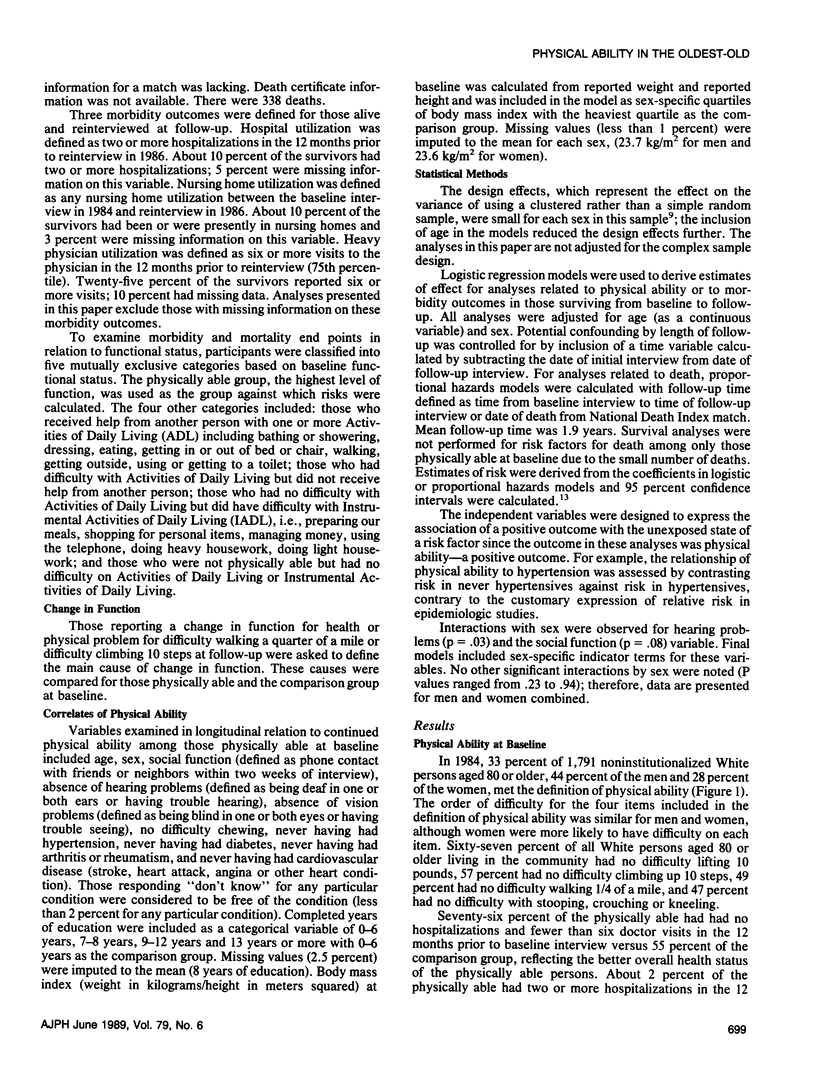
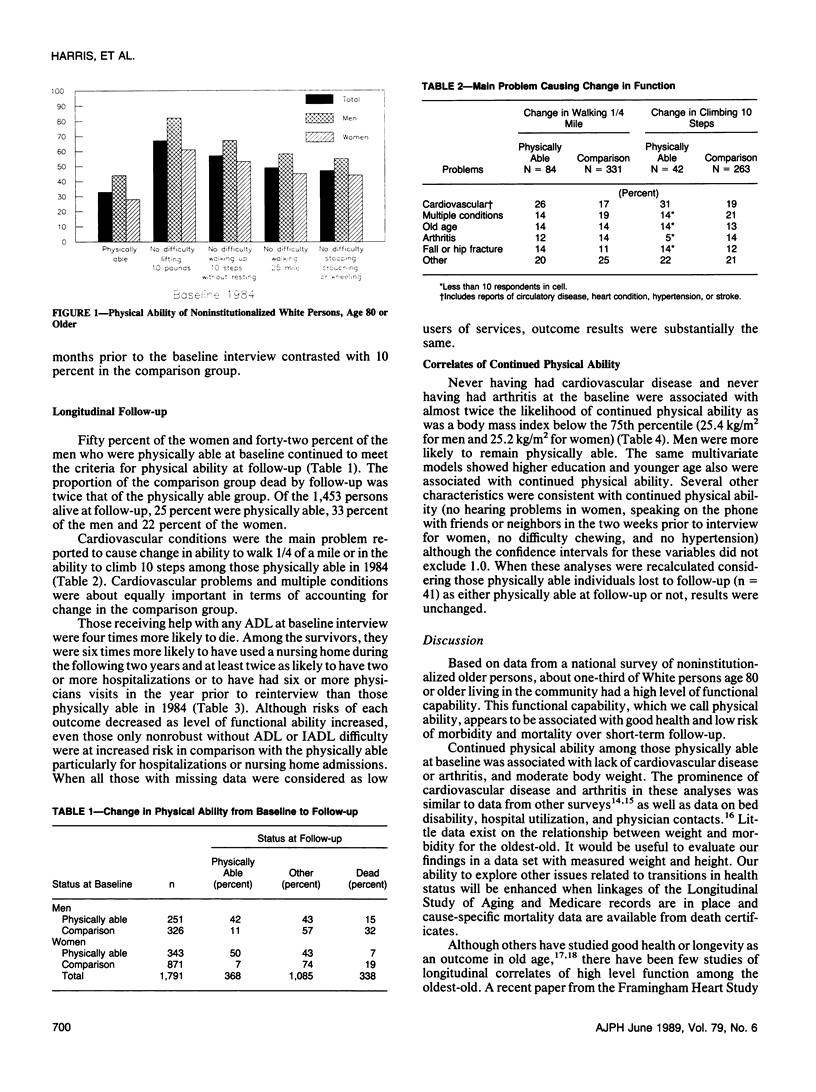
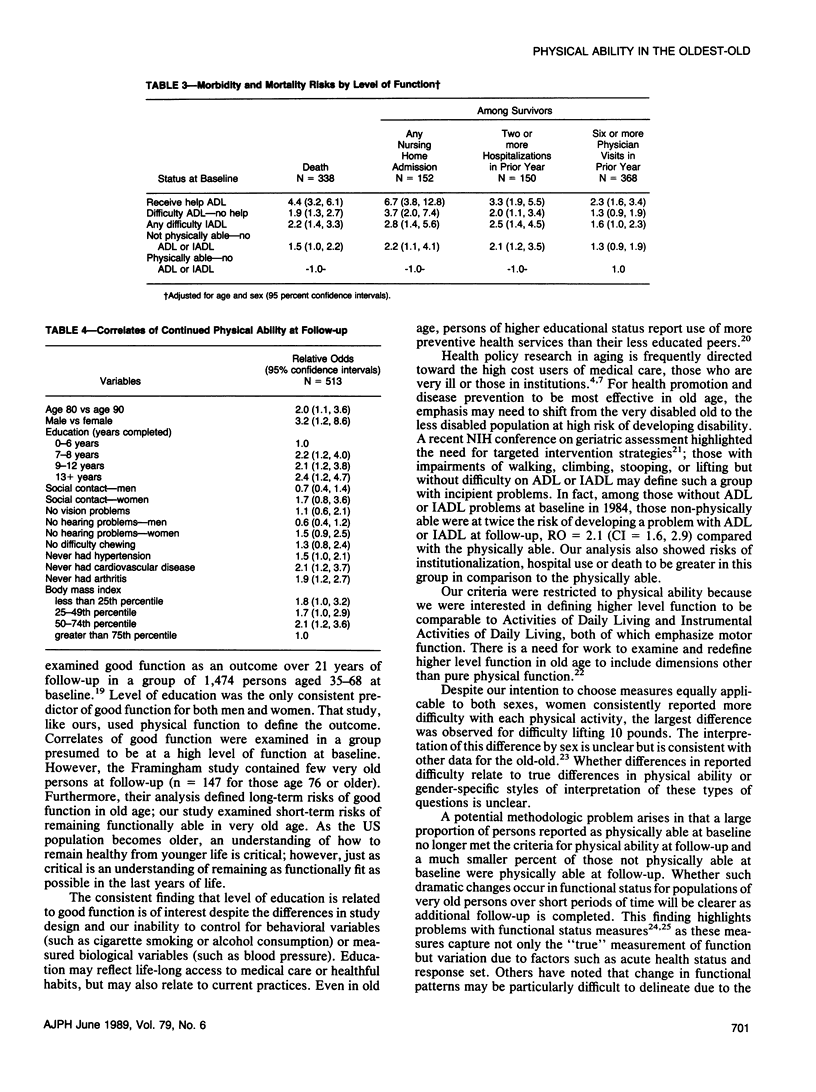
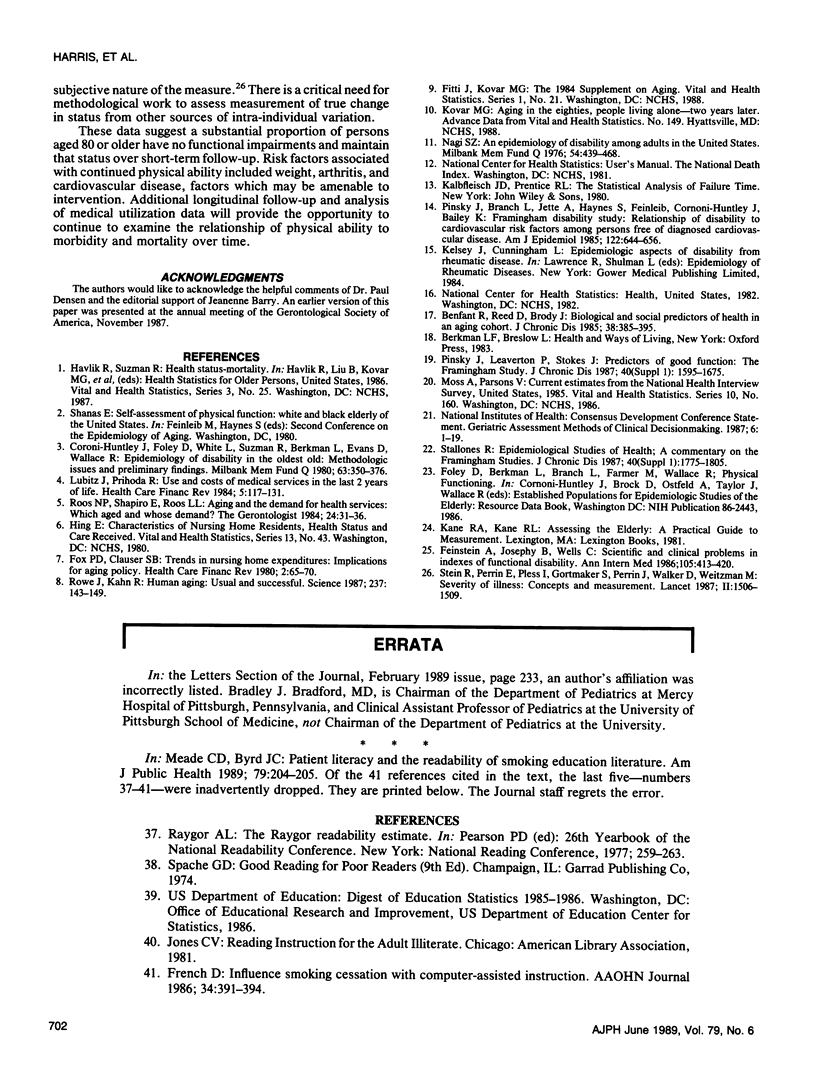
Selected References
These references are in PubMed. This may not be the complete list of references from this article.
- Benfante R., Reed D., Brody J. Biological and social predictors of health in an aging cohort. J Chronic Dis. 1985;38(5):385–395. doi: 10.1016/0021-9681(85)90134-1. [DOI] [PubMed] [Google Scholar]
- Cornoni-Huntley J. C., Foley D. J., White L. R., Suzman R., Berkman L. F., Evans D. A., Wallace R. B. Epidemiology of disability in the oldest old: methodologic issues and preliminary findings. Milbank Mem Fund Q Health Soc. 1985 Spring;63(2):350–376. [PubMed] [Google Scholar]
- Feinstein A. R., Josephy B. R., Wells C. K. Scientific and clinical problems in indexes of functional disability. Ann Intern Med. 1986 Sep;105(3):413–420. doi: 10.7326/0003-4819-105-3-413. [DOI] [PubMed] [Google Scholar]
- Fox P. D., Clauser S. B. Trends in nursing home expenditures: implications for aging policy. Health Care Financ Rev. 1980 Fall;2(2):65–70. [PMC free article] [PubMed] [Google Scholar]
- Lubitz J., Prihoda R. The use and costs of Medicare services in the last 2 years of life. Health Care Financ Rev. 1984 Spring;5(3):117–131. [PMC free article] [PubMed] [Google Scholar]
- Nagi S. Z. An epidemiology of disability among adults in the United States. Milbank Mem Fund Q Health Soc. 1976 Fall;54(4):439–467. [PubMed] [Google Scholar]
- Pinsky J. L., Branch L. G., Jette A. M., Haynes S. G., Feinleib M., Cornoni-Huntley J. C., Bailey K. R. Framingham Disability Study: relationship of disability to cardiovascular risk factors among persons free of diagnosed cardiovascular disease. Am J Epidemiol. 1985 Oct;122(4):644–656. doi: 10.1093/oxfordjournals.aje.a114144. [DOI] [PubMed] [Google Scholar]
- Roos N. P., Shapiro E., Roos L. L., Jr Aging and the demand for health services: which aged and whose demand? Gerontologist. 1984 Feb;24(1):31–36. doi: 10.1093/geront/24.1.31. [DOI] [PubMed] [Google Scholar]
- Rowe J. W., Kahn R. L. Human aging: usual and successful. Science. 1987 Jul 10;237(4811):143–149. doi: 10.1126/science.3299702. [DOI] [PubMed] [Google Scholar]
- Stein R. E., Gortmaker S. L., Perrin E. C., Perrin J. M., Pless I. B., Walker D. K., Weitzman M. Severity of illness: concepts and measurements. Lancet. 1987 Dec 26;2(8574):1506–1509. doi: 10.1016/s0140-6736(87)92633-x. [DOI] [PubMed] [Google Scholar]


